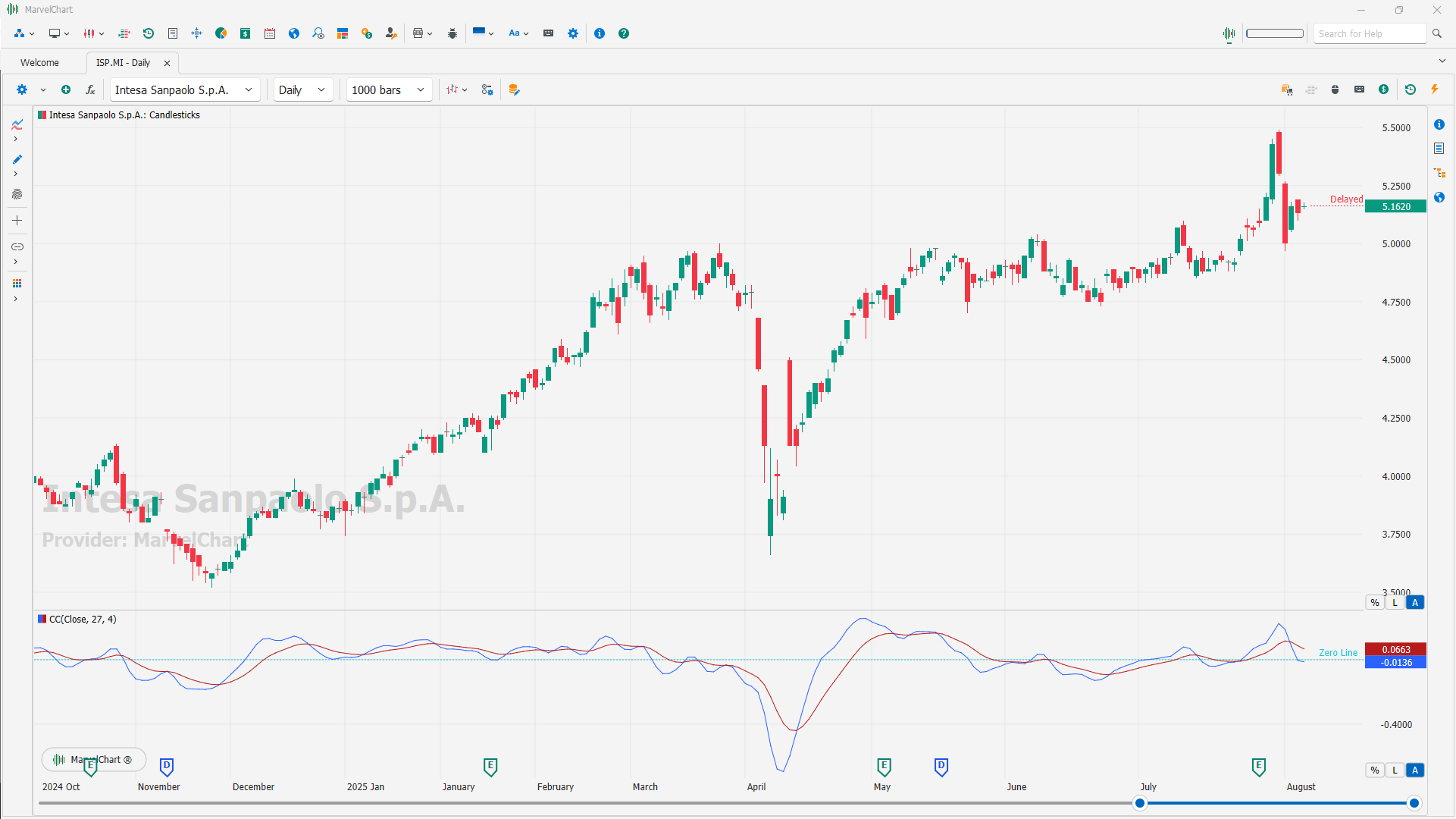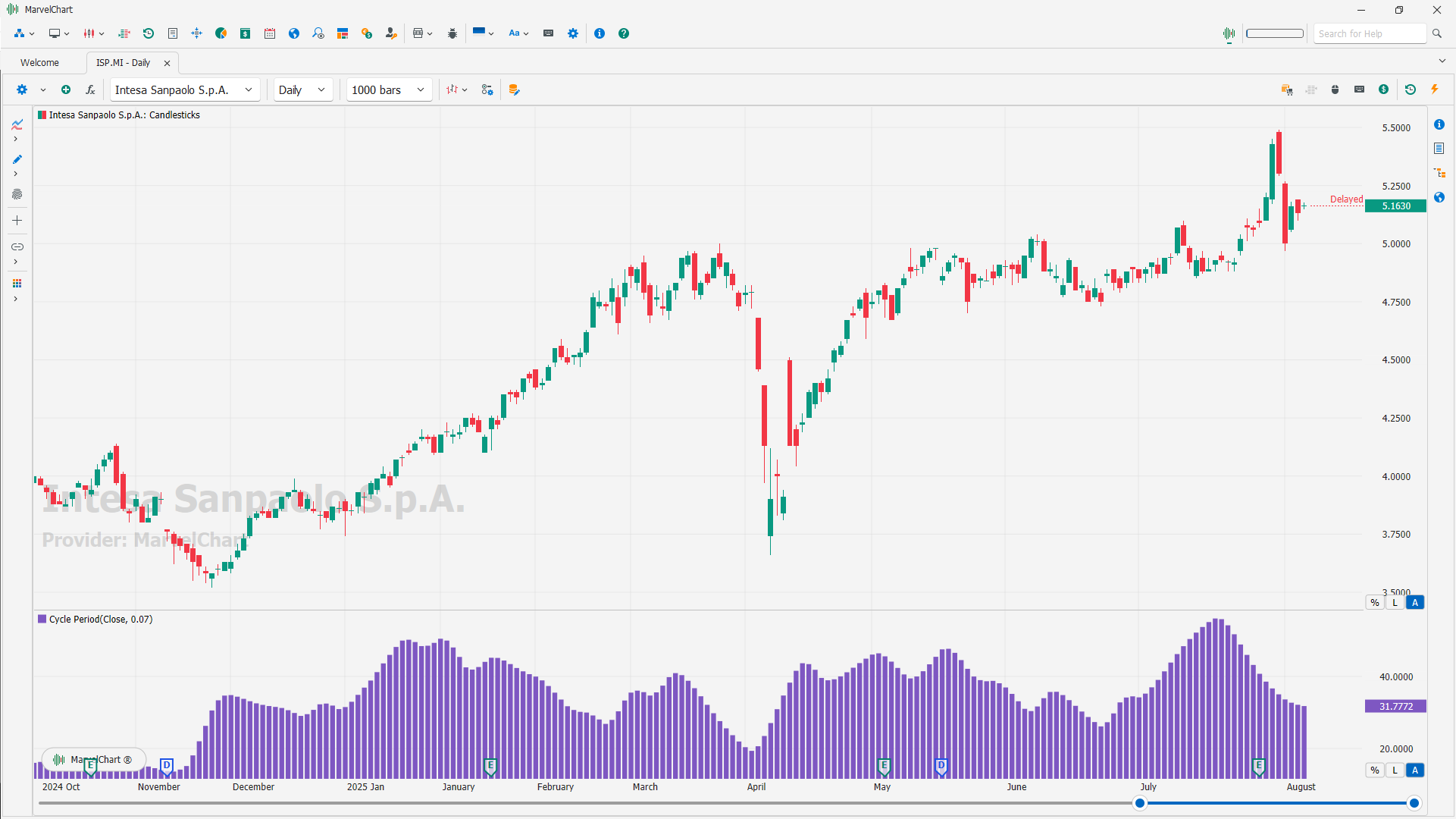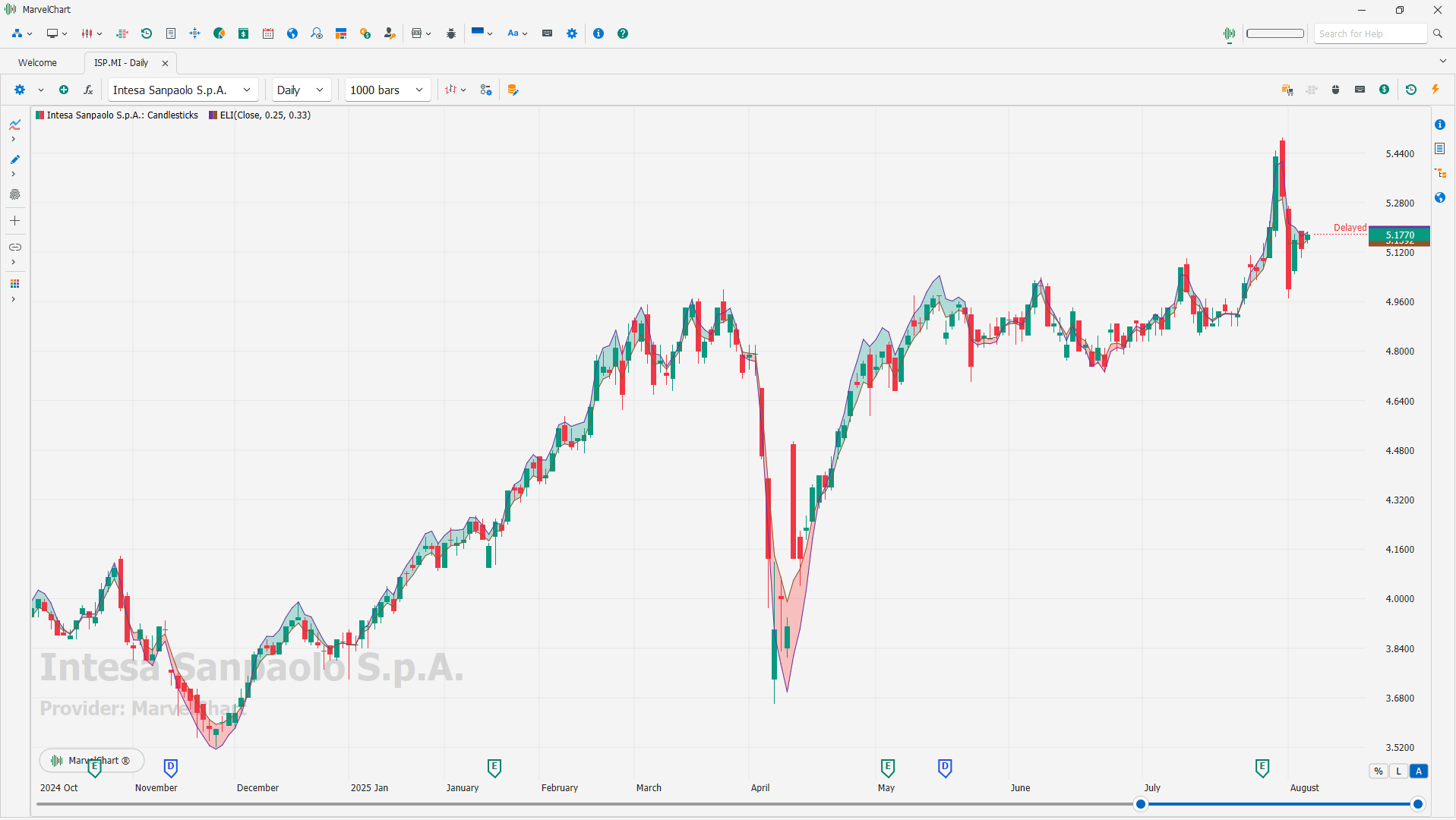Cycle Analysis
Cyber Cycle

The Cyber Cycle indicator, developed by John Ehlers, is a technical analysis tool designed to isolate cyclical price movements from the overall trend in a market. It aims to identify potential price reversals and assist traders in timing entries and exits. Unlike traditional momentum indicators, the Cyber Cycle adapts to changing market conditions by dynamically adjusting to price fluctuations.
Purpose
Isolate Cycles
The Cyber Cycle helps traders distinguish cyclical price patterns from the broader market trend.
Identify Reversals
By detecting cycle turning points, it can signal potential price reversals, allowing for timely entry and exit points.
Adaptability
The indicator is designed to be effective in both trending and range-bound markets.
Key Features
Zero-Cross Subtype
The indicator often uses a zero line as a reference, with signals generated when the indicator line crosses this line.
Adaptive Nature
The Cyber Cycle's ability to adjust to changing market conditions makes it suitable for various trading scenarios.
Lag Reduction
Advanced smoothing algorithms are used to minimize lag, making the indicator more responsive to price changes.
How it's used
Crossover Signals
Traders often look for crossovers between the Cyber Cycle line and a trigger line, or the zero line, to identify potential buy or sell signals.
Confirmation Tool
The Cyber Cycle can be used as a confirmation tool within a larger trading system.
System Integration
Traders may combine the Cyber Cycle with other indicators or price action analysis to refine their trading strategies.
Summary
Cycle Period

The Ehlers Cycle Period indicator, developed by John Ehlers, is a tool used in technical analysis to identify the dominant cycle length in market data. It helps traders understand the prevailing cyclical patterns, which can be useful for timing entries and exits in trading. This indicator essentially estimates the approximate number of bars between peaks or troughs in a price cycle.
Purpose
Cycle Identification
The primary function is to identify the dominant cycle length in a market, revealing the typical duration of price fluctuations.
Adaptive Indicator Input
The cycle period output can be used as an input for other adaptive indicators, allowing for more responsive and accurate analysis.
Trend Detection
The indicator can also be used to identify trends by analyzing how the cycle period changes over time.
How it works
Dominant Cycle
The indicator focuses on the most prominent cycle in the price data, which is the one with the largest amplitude.
Lag Reduction
Ehlers' work often emphasizes reducing lag in indicators, and this cycle period indicator is designed to provide timely information about cycle lengths.
Adaptive Filtering
The indicator can be used in conjunction with other filters, such as band-pass filters, to isolate specific cycle periods and reduce noise.
Practical Applications
Swing Trading
The cycle period can help traders identify potential turning points in the market and time their swing trades.
Adaptive Indicators
The cycle period can be used as a dynamic input for other indicators, allowing them to adapt to changing market conditions.
Trend Identification
By observing how the cycle period changes, traders can gain insights into whether the market is trending or ranging.
Key Concepts
High-Pass Filter
A high-pass filter removes low-frequency components from the price data, allowing for the isolation of shorter-term cycles.
Lag Reduction
Ehlers' work often focuses on minimizing lag in indicators, which is the delay between a price change and the indicator's response.
Adaptive Indicators
Indicators that adjust their parameters based on market conditions, such as the dominant cycle period, are considered adaptive.
Ehlers Leading Indicator

Ehlers Leading Indicator (ELI) gives an advanced indication of a cyclic turning point. It is computed by subtracting the simple moving average of the detrended synthetic price from the detrended synthetic price. Buy and Sell signals arise when the ELI indicator crosses over or under the detrended synthetic price.